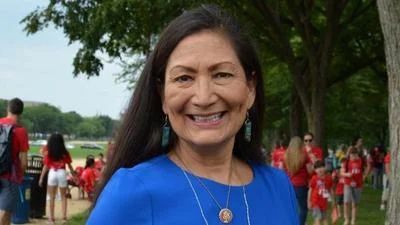John Crenshaw President | New Mexico Wildlife Federation
The New Mexico State Game Commission has unanimously approved the State Wildlife Action Plan, a document designed to guide conservation efforts for over 500 native species at risk. The plan will set the state's conservation priorities for the next ten years and now awaits submission to the U.S. Fish and Wildlife Service as required for continued federal funding.
Every decade, states are required to update their wildlife action plans to identify species most in need of conservation. This year’s update in New Mexico expands on previous versions by including more pollinating insects alongside mammals, birds, fish, and amphibians.
Virginia “Ginny” Seamster, Ph.D., assistant chief for technical guidance in the Wildlife Management Division, was recognized by commissioners and others for her work coordinating contributions from biologists inside and outside the department during the two-year drafting process.
The plan lists 505 species of greatest conservation need such as burrowing owls, pinyon jays, river otters, Chiracahua leopard frogs, and Gila trout. For 303 of these species—including American dippers and yellow-bellied marmots—more scientific research is needed to determine their current status.
The effects of climate change are addressed in the new plan. It notes that fish and amphibians face particular risks due to projected hotter and drier conditions over the next decade.
Stewart Liley, head biologist at the game department who presented the plan to commissioners, emphasized that it is not a regulatory document: “I think you’ll see more species come off in the next ten years,” he said regarding state-listed species needing conservation. Liley added that implementation of these actions could help prevent additional listings under the federal Endangered Species Act—which can result in land use restrictions—citing recent successes with native fish species like Rio Grande Chub and Sucker.
Liley also noted recovery progress for Gould’s Turkey: limited hunting was recently allowed after successful efforts removed it from higher-priority concern lists.
Commissioner Fernando Clemente praised inclusion of riparian areas’ importance as well as climate change impacts. “I see that this report being more of an acting report, versus reacting,” Clemente said. Commissioner Christopher Witt stated he found justification for increasing listed bird species after close review: “It provided a good roadmap to prevent future population declines.”
Jesse Deubel, executive director of New Mexico Wildlife Federation (NMWF), expressed support: “We are very supportive of the draft that’s in front of you today,” he said. “We’re looking forward to seeing that adopted by this commission.”
Tom Paterson from New Mexico Cattle Growers’ Association raised concerns about growth in listed species compared with past plans; his was reportedly the only comment opposing aspects of the new plan during Friday’s meeting.
In separate action Friday related to hunting management near Jicarilla Apache Nation lands northwestern New Mexico—the commission agreed to reduce deer hunting licenses starting fall 2026 after tribe representatives reported excessive harvests affecting young buck populations near Unit 2-B bordering Colorado between Bloomfield and Chama.
The Jicarilla Apache Tribe requested emergency measures earlier this year due to declining buck numbers attributed largely to state-licensed hunters. They asked officials shift management focus from high-volume opportunity hunts toward quality hunts allowing bucks time to mature into larger animals prized by trophy hunters.
Commission Chairman Richard Stump announced his agreement with NMDGF Director Mike Sloane's decision reducing available tags up to 20 percent—a move within administrative authority when supported by commission leadership—with changes affecting three public hunts and two private land hunts beginning fall 2026:
- Public hunt DER-1-113 will decrease from 350 licenses down by 70.
- Private land hunt DER-1-114 drops from 25 licenses down by five.
- Public hunt DER-1-115 falls from 400 licenses down by eighty.
- Private land hunt DER-1-116 reduces seventy-five licenses down by fifteen.
- Youth-only public hunt DER-1-117 cuts twenty-five licenses down by five.
After reductions take effect total deer licenses issued across all affected units will drop from 875 currently available permits per season down to 700 beginning with fall hunts scheduled two years out.









